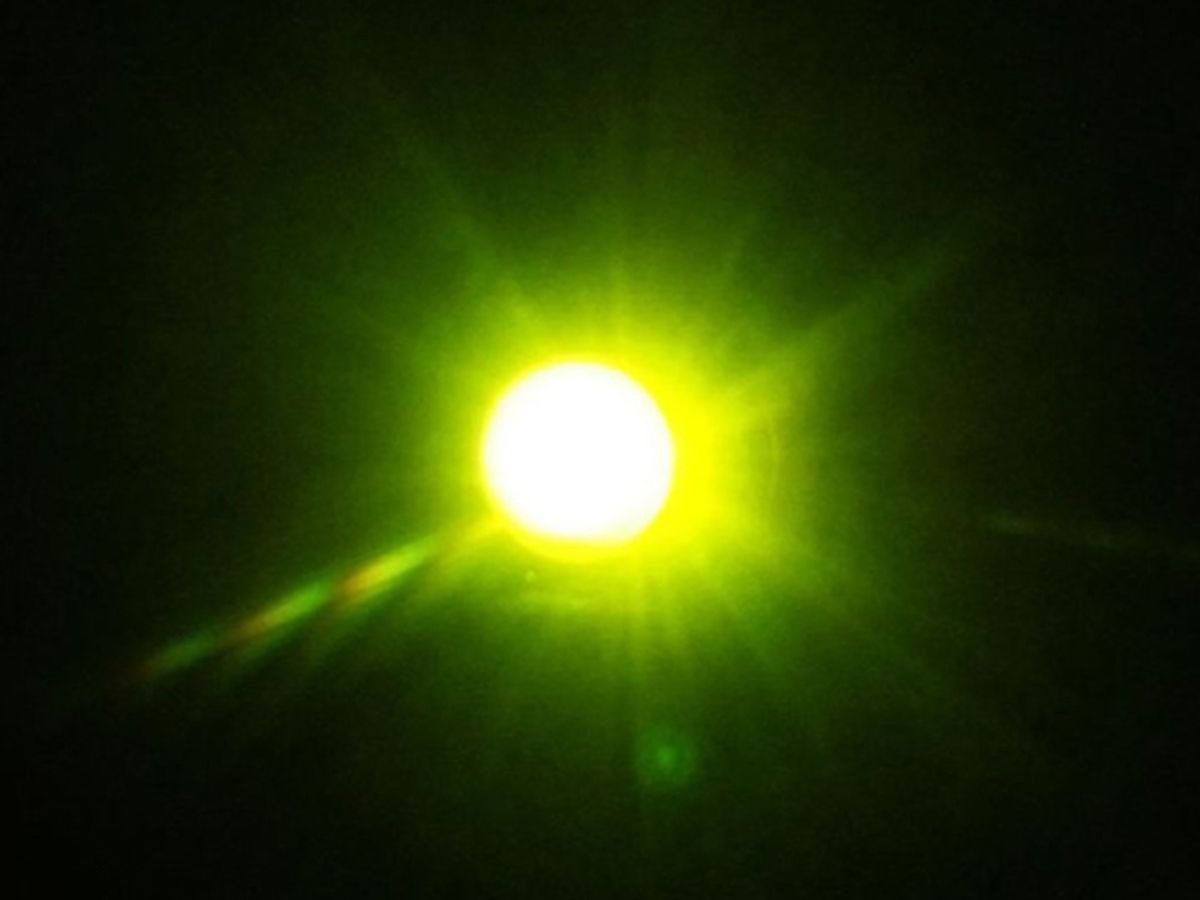A new technique that causes a diffuse material such as a powder to emit laser light could distinguish a harmless substance from an explosive or allow aerial mapping of fertilizer, say the scientists who developed it.
The method is based on Raman spectroscopy. When light strikes a molecule, roughly one in 10 million photons hitting it will drop to a lower frequency that’s determined by just what molecule it is. By seeing how the wavelength of the scattered light changes, an observer can identify what substance she’s seeing. Unfortunately, 1 in 10 million is a fairly weak signal, so some sort of amplification is needed.
To boost the signal, researchers at Texas A&M and the Air Force Research Laboratory turned to a phenomenon known as random lasing. Traditional lasers work by bouncing photons back and forth in a laser cavity, in which a material such as a crystal or a gas sits between two mirrors. The photons excite electrons to produce more photons, amplifying their numbers until a beam of light emerges. But lasing can also happen without mirrors in a material like a powder, if the light bounces among the particles long enough for amplification to occur. Shining an intense laser beam into a substance that’s sufficiently dense to trap the light for a time increases the number of Raman conversions, producing a strong signal with a chemical signature.
“Ordinary soil is quite able to give you this type of physical condition,” says Marlan Scully, professor of applied physics at Texas A&M. He and Vladislav Yakovlev, professor of biomedical engineering, describe their work in the latest issue of Proceedings of the National Academies of Science.
Their team shone green laser light on samples and got back Raman spectra that identified various chemicals, such as ammonium and potassium nitrate. They were able to detect the chemicals at a distance of 1 kilometer.
“There’s no reason we couldn’t go 10 km away,” Scully says. Such distance would allow security personnel to safely check whether a substance was explosive without getting too close, or let a plane fly over farmland to see if the soil contained enough fertilizer. Further refinements might even allow the technique to work from orbit, for agricultural mapping.
“This is the first application of random lasing,” says Scully. “We think we’re onto something.”
Neil Savage is a freelance science and technology writer based in Lowell, Mass., and a frequent contributor to IEEE Spectrum. His topics of interest include photonics, physics, computing, materials science, and semiconductors. His most recent article, “Tiny Satellites Could Distribute Quantum Keys,” describes an experiment in which cryptographic keys were distributed from satellites released from the International Space Station. He serves on the steering committee of New England Science Writers.



